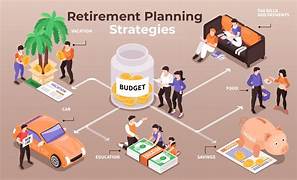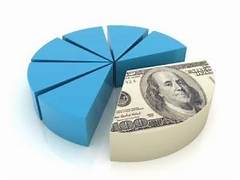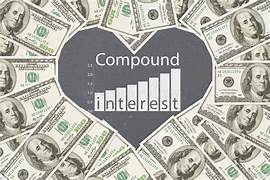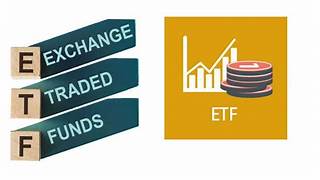How to Choose the Best Retirement Savings Plan
Planning for retirement can feel like a daunting task, but it’s crucial for securing your financial future. One of the first steps in retirement planning is selecting the right savings plan. With so many options available, it can be difficult to know where to start. Should you go for an individual retirement account (IRA), or is a 401(k) the better choice for you?
Choosing the best retirement savings plan is about aligning your choice with your specific financial goals, risk tolerance, and time horizon. The good news is that once you understand the different types of retirement plans and their features, you can make an informed decision that suits your long-term needs. In this guide, we’ll break down the key factors to consider when choosing a retirement savings plan and help you find the best fit for your financial future.
1. Understand the Different Types of Retirement Plans
401(k) Plans
A 401(k) plan is an employer-sponsored retirement savings plan that allows you to contribute a portion of your income, typically before taxes, into a retirement account. Many employers offer a match, meaning they will contribute additional funds based on the amount you contribute. This is essentially free money and a key benefit of 401(k) plans.
There are two types of 401(k) plans:
- Traditional 401(k): Contributions are made before taxes, and you pay tax on the money when you withdraw it in retirement.
- Roth 401(k): Contributions are made after-tax, but withdrawals in retirement are tax-free, as long as certain conditions are met.
Individual Retirement Accounts (IRAs)
An IRA is an individual retirement account that allows you to save money for retirement with tax advantages. You can choose between a Traditional IRA or a Roth IRA, depending on your tax preferences.
- Traditional IRA: Contributions are tax-deductible in the year they are made, and taxes are paid when you withdraw funds in retirement.
- Roth IRA: Contributions are made after-tax, but your money grows tax-free, and qualified withdrawals in retirement are tax-free.
Simplified Employee Pension (SEP) IRA
A SEP IRA is designed for self-employed individuals or small business owners. It allows higher contribution limits than a traditional IRA, making it an attractive option for those looking to save more for retirement. Contributions are made on a pre-tax basis, reducing taxable income in the year they’re made.
Solo 401(k)
A Solo 401(k) is another option for self-employed individuals or business owners with no employees (other than themselves and their spouse). Like the regular 401(k), it offers both traditional and Roth options and allows for larger contribution limits, especially when you contribute both as the employee and the employer.
2. Evaluate Your Tax Situation
When choosing the best retirement savings plan, one of the most important factors to consider is how taxes will impact your savings and withdrawals. The two main types of retirement accounts—traditional and Roth—offer different tax benefits:
- Traditional Accounts (401(k) and Traditional IRA): Contributions are tax-deductible, reducing your taxable income in the year you make the contribution. However, you will pay taxes on the withdrawals in retirement, so your taxable income may increase later.
- Roth Accounts (Roth 401(k) and Roth IRA): Contributions are made after taxes, meaning you won’t get a tax deduction now. However, withdrawals in retirement are tax-free, which can be beneficial if you expect to be in a higher tax bracket during retirement.
Understanding your current and expected future tax situation can help you decide whether a traditional or Roth plan is right for you. If you anticipate a higher income in retirement, a Roth plan may be a good choice, as it allows tax-free withdrawals. On the other hand, if you expect to be in a lower tax bracket during retirement, a traditional account may offer more immediate tax benefits.
3. Consider Contribution Limits and Match Offers
Contribution Limits
Each retirement savings plan comes with specific contribution limits, which dictate how much you can contribute annually. For instance:
- 401(k): For 2025, the contribution limit is $23,000 for individuals under 50 and $30,500 for those 50 or older (including catch-up contributions).
- IRA: For 2025, the contribution limit is $6,500 for individuals under 50 and $7,500 for those 50 or older (including catch-up contributions).
- SEP IRA: For 2025, the contribution limit is the lesser of 25% of your compensation or $66,000.
If you’re looking to contribute larger amounts to your retirement savings, you may want to consider a 401(k) or SEP IRA, as they typically have higher contribution limits than IRAs.
Employer Matching
If your employer offers a 401(k) match, this is a key factor to consider when choosing a retirement plan. An employer match means that for every dollar you contribute to your 401(k), your employer will contribute a certain amount as well—up to a specified limit. Employer matches are essentially free money, and if your employer offers this benefit, it’s generally advisable to contribute at least enough to get the full match.
4. Assess Your Investment Options
Different retirement savings plans offer different investment options. In general, 401(k) plans provide a limited set of investment choices, typically including a range of mutual funds, target-date funds, and index funds. However, with an IRA, you generally have more flexibility, allowing you to invest in a broader range of assets, such as individual stocks, bonds, ETFs, and mutual funds.
If you want more control over your investment choices, an IRA might be the best option for you. On the other hand, if you prefer to have your investments chosen for you, or if you’re new to investing, a 401(k) plan with a target-date fund option might be a better fit.
5. Evaluate Fees and Expenses
Every retirement savings plan comes with associated fees, and these can vary significantly depending on the type of account and the investment options within it. Fees can eat into your long-term returns, so it’s important to be aware of them.
- 401(k) Plans: Many 401(k) plans charge administrative fees or fund management fees, which can reduce your investment returns over time. Be sure to review the fees associated with your plan before making any decisions.
- IRAs: IRAs can also have fees, particularly if you’re using a broker to manage your investments. However, many online brokers offer low-cost or no-cost IRA options, making it a good choice for cost-conscious investors.
Make sure to compare fees before choosing a retirement savings plan, as lower fees can lead to more money in your pocket in the long run.
6. Consider Your Age and Retirement Timeline
Your age and timeline for retirement will play a big role in determining which retirement savings plan is best for you. If you’re just starting out in your career, you may not need to worry too much about high contribution limits, but you may want to focus on a plan with low fees and a good range of investment options.
On the other hand, if you’re closer to retirement, you may want to maximise your contributions and ensure your investments are well-positioned for the long term. Target-date funds (which automatically adjust the asset mix as you approach retirement) can be an excellent option for those with a shorter retirement timeline.
7. Understand Withdrawal Rules and Penalties
Different retirement plans have different rules about when and how you can access your money. Typically, you can start withdrawing funds from your retirement account without penalty at age 59½. However, if you withdraw funds earlier, you may face penalties or taxes.
- 401(k): If you take a withdrawal before age 59½, you may face a 10% penalty plus regular income tax on the amount withdrawn.
- IRA: The same rules apply for early withdrawals from an IRA, although there are exceptions, such as for first-time homebuyers or qualified education expenses.
It’s important to understand the rules around withdrawals and penalties, as this can affect how you use your retirement funds in the future.
Conclusion
Choosing the best retirement savings plan is a critical step in securing your financial future. By understanding the different types of retirement accounts, considering factors like tax benefits, contribution limits, and investment options, you can make a decision that aligns with your financial goals. Remember, the earlier you start saving for retirement, the more time your money has to grow. So take the time to research and choose the right plan for you, and start building your future today!
FAQs
1. Can I have both a 401(k) and an IRA?
Yes, you can contribute to both a 401(k) and an IRA, but there are limits on how much you can contribute to each account. Be sure to review the contribution limits for both.
2. What happens if I contribute more than the limit?
If you contribute more than the allowed limit, you may face penalties and taxes on the excess contributions. It’s important to stay within the contribution limits to avoid these penalties.
3. Can I withdraw from my retirement savings plan early?
You can withdraw from your retirement savings plan early, but you may face penalties and taxes unless you meet specific exceptions.
4. What is the difference between a traditional 401(k) and a Roth 401(k)?
A traditional 401(k) allows you to contribute pre-tax dollars, and you’ll pay taxes when you withdraw in retirement. A Roth 401(k) allows you to contribute after-tax dollars, but withdrawals in retirement are tax-free.
5. How do employer matches work in a 401(k)?
Employer matches are additional contributions your employer makes to your 401(k) based on how much you contribute. For example, your employer might match 50% of your contributions, up to a certain limit.
6. How much should I contribute to my retirement savings plan?
Aim to contribute at least enough to get the full employer match, if available. Over time, try to increase your contributions to maximise your savings for retirement.
7. What are the benefits of a Roth IRA?
The main benefit of a Roth IRA is that your withdrawals in retirement are tax-free, which can be a significant advantage if you expect to be in a higher tax bracket when you retire.






